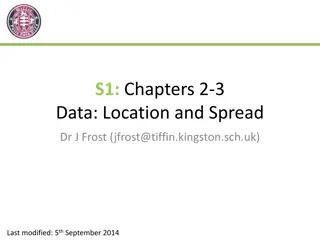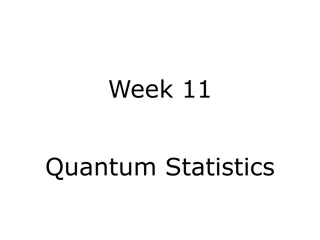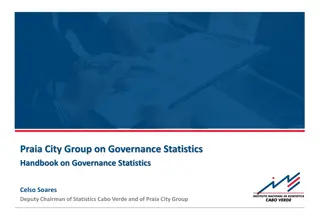Understanding Quartiles in Statistics
Quartiles are essential statistical measures that divide data into four equal parts to provide insight into the distribution of values. From calculating quartiles in individual, discrete, and continuous series, to understanding the significance of Q1, Q2, and Q3, this overview delves into the practical applications of quartiles in data analysis.
Download Presentation

Please find below an Image/Link to download the presentation.
The content on the website is provided AS IS for your information and personal use only. It may not be sold, licensed, or shared on other websites without obtaining consent from the author. Download presentation by click this link. If you encounter any issues during the download, it is possible that the publisher has removed the file from their server.
E N D
Presentation Transcript
Quartile is a statistical term that divides the data into four quarters. It basically divides the data points into a data set in 4 quarters on the number line. One thing we need to keep in mind is that data points can be random and we have to put those numbers in line first on the number line in ascending order and then divide them into quartiles.
In Individual series 1st quartile also known as the lower quartile and is denoted by Q1. It separates the lowest 25% of data from the highest 75%. The first quartile or the 25th percentile is given as: First Quartile (Q1)=((n+1)/4)th Term also known as the lower quartile.
2nd quartile or the middle quartile, denoted by Q2 also the same as the median it divides numbers into 2 equal parts. The second quartile or the 50th percentile or the Median is given as: Second Quartile (Q2)=((n+1)/2)th Term.
3rd quartile or the upper quartile, denoted by Q3 separates the highest 25% of data from the lowest 75%. The third Quartile or the 75th Percentile (Q3) is given as: Third Quartile(Q3)=(3(n+1)/4)th Term also known as the upper quartile.
In Discrete series For calculating quartiles in discrete series, check if the series is in the increasing order of magnitude or not. If not, arrange it in ascending order. Then, find the Cumulative frequencies and apply the same formula as given in the case of individual series to find quarters.
In continuous series Quartiles for Continuous series (grouped data) Step 1: Find cumulative frequencies Step 2: Find (N/4) Step 3: Q1 class is the class interval corresponding to the value of the cumulative frequency just greater than (N/4) Step 4: Q3 class is the class interval corresponding to the value of the cumulative frequency just greater than 3 (N/4)

























